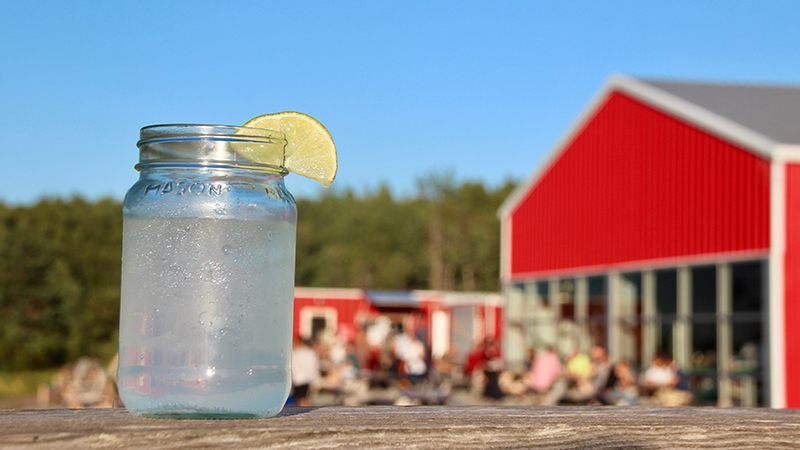
Thomas Steinhart learned gin-making as a boy at his grandfather’s knee in Germany. As with many rural families, operating a still was as much a part of life on a subsistence farm as milking a cow. “If you had a farm, you had a still,” says Steinhart through his handlebar moustache. Making schnapps, vodka and a great bottle of gin are second nature to this trained millwright and mechanical engineer.
Confirmation of Steinhart’s skill came almost immediately after the 2012 start-up of Steinhart Distillery here in the tiny village of Arisaig on Nova Scotia’s northern coast. Some of his first runs won top honours in Berlin, San Francisco and New York. Since then, Steinhart has become possibly the only gin-maker in the Americas to be invited to join the exclusive Gin Guild in England.
I’ve come here to learn a few secrets from the man himself at his new experiential offering, the weekend-long GINstitute by the Sea. I arrive on a warm Friday evening, the sky so clear I can see across the Northumberland Strait to Prince Edward Island, where the only grain used at Steinhart is grown—red winter wheat. Dinner of traditional German fare like schnitzel and spätzle is included in the weekend package, as is a gin-and-tonic nightcap.
“If you had a farm, you had a still.”
The next morning, we get at it. With the help of Steinhart’s assistant, Wayne Johnson, I design my own unique gin recipe. My mini two-litre still is filled with a base of distillery vodka. I measure and crush exact amounts of the two essential ingredients for a good gin—juniper berries grown in Italy and coriander seed—and toss them directly into the vodka. Then, into the aroma pot that slips inside the still, I place fresh citrus peel, half a pod of star anise, a bit of angelica root, a few cardamom pods and dried orange-tree flowers.
Mom, I'm Sick
Gin was originally meant for medicinal purposes, made by monks and “alchemists” in Europe from distilling grapes and grains.
For the next several hours, there’s nothing to do but sip drinks from the bar and tend the still. I’m careful to keep the temperature around 90° C and to top up the ice in the condensing cup. Every 15 minutes or so, I pour off the gin that’s been dripping into my collection glass.
Steinhart himself stops by to see how his students are doing. Holding his finger beneath the cooling coil, he collects a single drop of my gin, tastes it, and declares it perfect for a mixed drink like a gin and tonic, though not suitable for a martini. I’m pleased—it seems I won’t be rising to Steinhart’s level on my first attempt, but I’ve created a flavourful base for my favourite cocktail.
Johnson tells me later that “Thomas makes a classic style of gin with fewer botanicals. When it comes to martinis, purists don’t want all that herb garden.”
When my bottle is filled at last, Johnson tells me I have time to distill a second bottle. On this effort, I stick to the basics, adding just a little citrus peel to the juniper and coriander seed. The results are closer to a classic martini gin. I’ve completed the GINstitute with two very different bottles of craft gin to take home.
After all this hard work, it’s time to sample the goods. I pour a little from my first bottle, add tonic and a squeeze of lime. I retire to the tables outside, admire the ocean view from this hilltop perch and sip my drink, knowing there’s not another quite like it anywhere.


